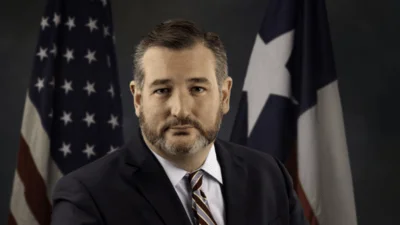The Congressional Record is a unique source of public documentation. It started in 1873, documenting nearly all the major and minor policies being discussed and debated.
“TRIBUTE TO REAR ADMIRAL WILLIAM L. STUBBLEFIELD ON THE OCCASION OF HIS RETIREMENT” mentioning the U.S. Dept. of Commerce was published in the Senate section on pages S1403-S1404 on Feb. 9, 1999.
The publication is reproduced in full below:
TRIBUTE TO REAR ADMIRAL WILLIAM L. STUBBLEFIELD ON THE OCCASION OF HIS
RETIREMENT
Mr. KERRY. Mr. President, I rise today to pay tribute to Rear Admiral Bill Stubblefield on the occasion of his retirement as the Director of the Office of NOAA Corps Operations and the Director of the NOAA Corps, in the Department of Commerce's National Oceanic and Atmospheric Administration. Rear Admiral Stubblefield has given 33 years of dedicated service to the nation.
Bill Stubblefield served as a commissioned officer in the U.S. Navy from 1962 to 1968 aboard a minesweeper and an icebreaker, and then with the U.S. Navy's SOSUS network. In 1968, he resigned his commission from the Navy to further his education and received his Master's degree in Geology from the University of Iowa in 1971.
In July 1971 Admiral Stubblefield joined the NOAA Commissioned Corps as a Lieutenant in his home town of Medina, Tennessee, and attended the 38th NOAA Corps Basic Officer Training Class which was held at the United States Merchant Marine Academy in Kings Point, New York. After his commissioning, he was assigned to serve as a Junior Officer aboard the NOAA Ships Pathfinder and Rainier, conducting hydrographic surveys in California, Washington, and Alaska. His next assignment was ashore with the Environmental Research Laboratory, Office of Oceanic and Atmospheric Research, in Miami, Florida, as Deputy Director of the Marine Geology and Geophysics Division. For this work, he received a NOAA Corps Special Achievement Award.
Admiral Stubblefield returned to sea duty in December of 1975 as Operations Officer aboard the NOAA Ship Researcher, which conducted oceanographic and atmospheric research in the waters of the Atlantic Ocean.
From January 1978 to May 1979, Admiral Stubblefield attended full-
time university training at Texas A&M University receiving his Ph.D. in geological oceanography. He returned to the Environmental Research Laboratory as a research oceanographer until 1981, when he was summoned back to sea as the Executive Officer of the NOAA Ship Researcher.
Following his sea assignment Admiral Stubblefield had tours of duty as the Scientific Support Coordinator of the southeastern Atlantic and Gulf coastal areas for the NOAA Office of Marine Pollution Assessment Hazardous Material Program and Technical Specialist for the NOAA Office of Sea Grant in Washington, D.C. Admiral Stubblefield was then assigned to the position of Chief Scientist for the NOAA Undersea Research Program.
He returned to sea in 1988 as Commanding Officer of the NOAA Ship Surveyor which conducted oceanic research from the Arctic to the Antarctic, including the north and south Pacific Ocean, Gulf of Alaska, and the Bering Sea. At the time, the Surveyor had attained the award of traveling the farthest north and south of any NOAA vessel at its time.
In 1990 he was assigned the position of Coordinator for the Fleet Modernization Study to assess the life expectancy of NOAA's ships and determine how to modernize NOAA's fleet to operate into the 21st century. For this work, he received the Department of Commerce Silver Medal, DOC's second highest award. In late 1990, Admiral Stubblefield became the Executive Director for the Office of Oceanic and Atmospheric Research, where he was responsible for the management and budget functions, international affairs, and administrative duties of this NOAA program office.
In August 1992, he was promoted to the rank of Rear Admiral, Lower Half and assigned as Deputy Director, Office of NOAA Corps Operations where he was responsible for the day-to-day operations of this staff office. In 1995, Admiral Stubblefield was selected for the position of Director, Office of NOAA Corps Operations and Director of the NOAA Commissioned Corps, and promoted to Rear Admiral, Upper Half, the highest position in the NOAA Corps.
Since Admiral Stubblefield became Director, the Office of NOAA Corps Operations has undergone many changes. He re-engineered the office to become more cost-efficient and customer oriented. He decommissioned five older ships, downsized the headquarters office by over 40 percent, both civilian and commissioned personnel, and reduced ship operating costs, while increasing the level of ship support.
Under his command, a new oceanographic ship, the Ronald H. Brown, was built and commissioned, and two former Navy ships were converted to conduct fisheries, oceanic, and atmospheric research. He also saw the new Gulfstream IV jet built and brought into operation to study the effects of El Nino last winter off the California coast and conduct hurricane reconnaissance this past hurricane season.
Also under his command, Admiral Stubblefield faced the most challenging task of his career, one that no head of a uniformed service would ever want to face--the decision to disestablish the NOAA Commissioned Corps. The Corps was under a hiring freeze that lasted for 4 years. Yet, Admiral Stubblefield still was able to maintain morale and fill the assignments required to operate the ships and aircraft.
This past October, when it became apparent the NOAA Corps plays a vital role for the country, the decision was made to retain the NOAA Corps. In January 1999, 17 new officers began their basic training at the Merchant Marine Academy in Kings Point, New York.
Admiral Stubblefield is an officer, a scientist, and a gentleman. I commend Bill for his tremendous accomplishments during his career and service to the Nation, especially those over the past three years. Thanks to his efforts, NOAA is stronger, more efficient and will carry out its invaluable mission into the next century.
____________________








